Mingering Mike
These handmade records—found at a flea market and “recorded” by an unknown singer, Mingering Mike—are exquisite in realistic-seeming details: gatefolds, label logos, complete lyrics, artwork. Even the platters are cardboard.
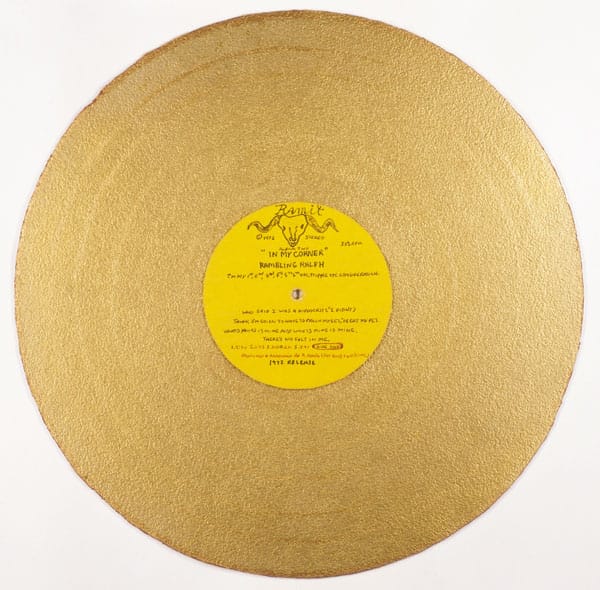
Interview by Rosecrans Baldwin
The Case of the Outside (Soul Superstar) Artist is an odd one: A record collector who is a DJ by night and a private eye by day stumbles across a rare batch of records at a flea market. Recorded by an unknown singer, Mingering Mike, the records are exquisite in realistic-seeming details: gatefolds, label logos, complete lyrics, artwork. They are also entirely hand-made, with painted sleeves, interiors, and actual platters made out of cardboard. Intrigued, the DJ-detective buys the lot and begins his search for Mingering Mike himself, eventually finding a man who never intended to sell his very personal quasi-recordings—they only showed up at the flea market because he was behind payments on his storage unit.
Thus begins the tale of one of the oddest musical careers to ever make the spotlight. The book Mingering Mike is now out from Princeton Architectural Press and we spoke with its author, Dori Hadar. Read the interview ↓
All images courtesy Princeton Architectural Press, all images copyright © Dori Hadar and Mingering Mike, all rights reserved.
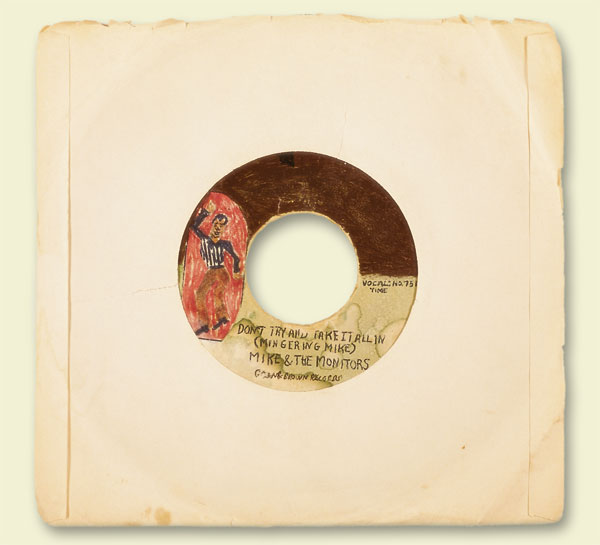
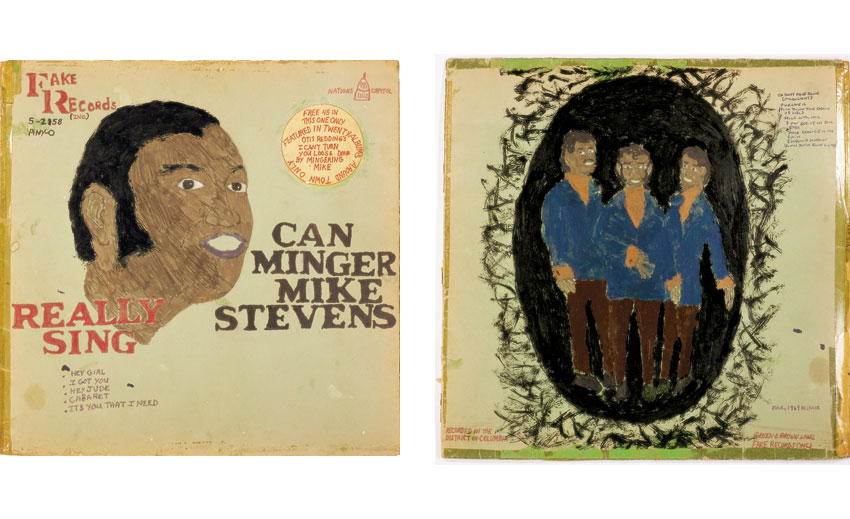
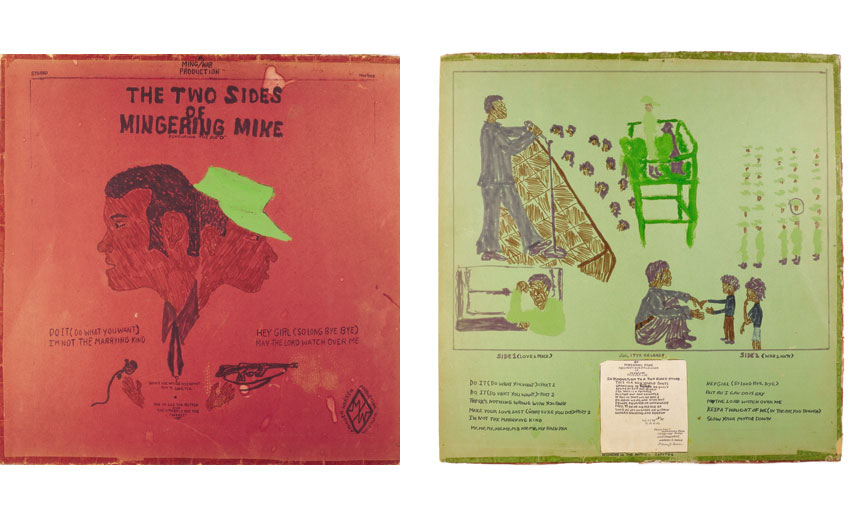
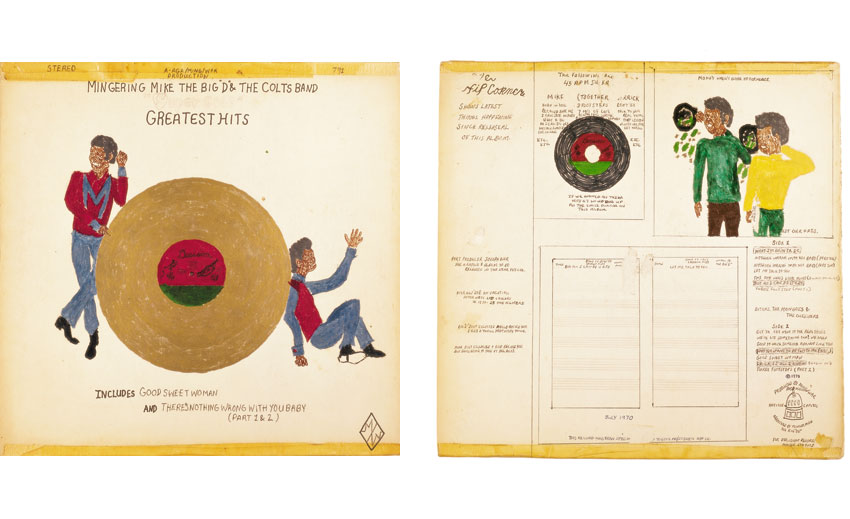
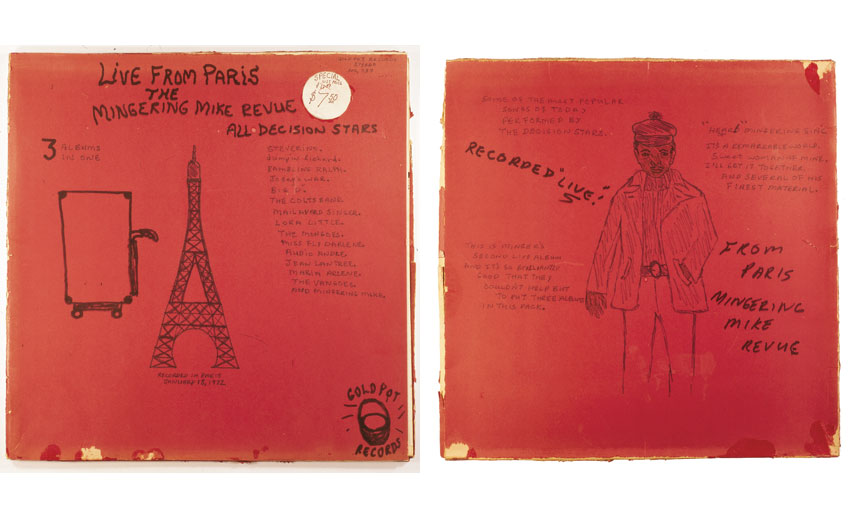
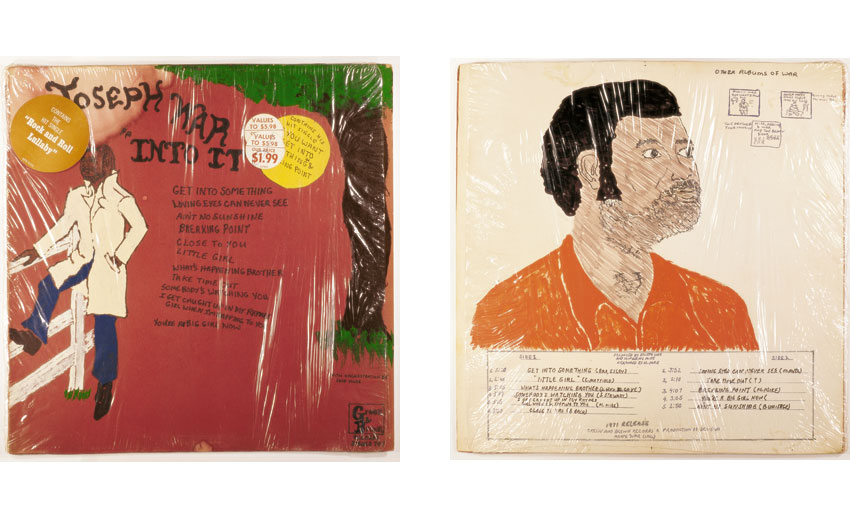
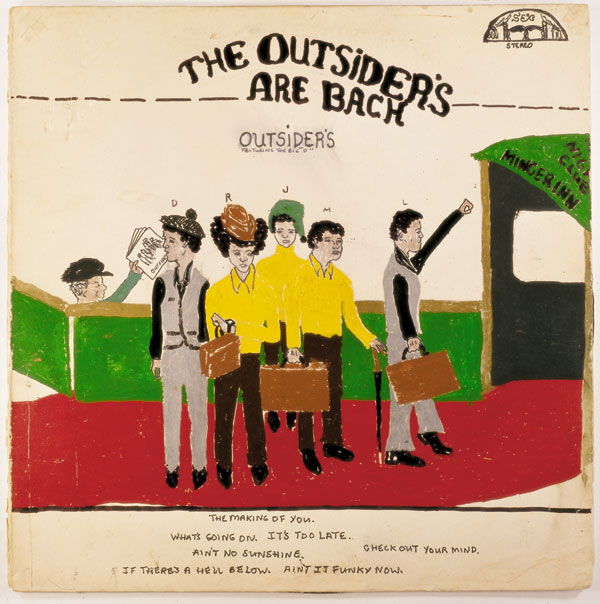
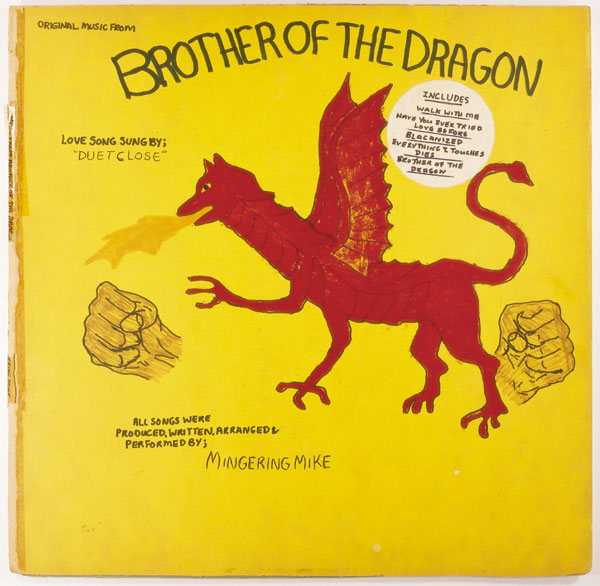
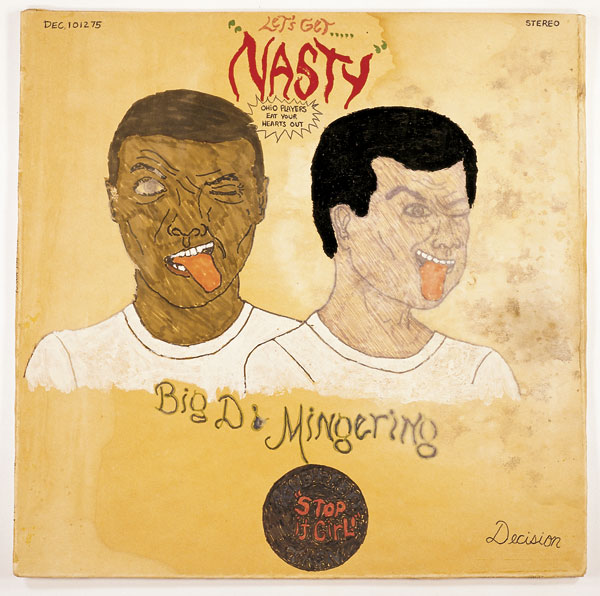
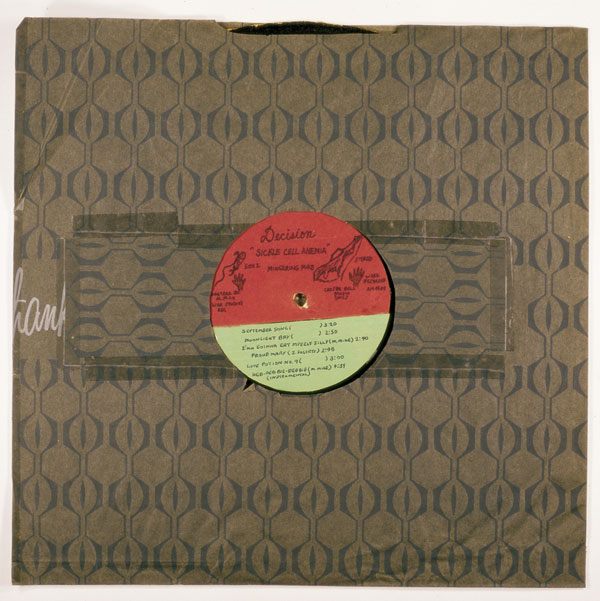

Interview
Your bio seems almost too perfect for a record hound: DJ by night, criminal investigator by day. What sort of investigative work do you do? Would you say Mingering Mike has been one of your more interesting cases?
The world of Mingering Mike is without a doubt the most amazing thing I’ve come across in all of my years of digging for records, and in my line of work. As a criminal defense investigator, my job is primarily to track down witnesses and find out what they might know about a particular incident. It’s really pretty straight forward. But Mingering Mike was a mystery unlike anything I’d ever encountered before. It wasn’t a question of who saw what or anything like that, but rather “What is this stuff? Who is Mingering Mike? And just why did he make these albums in the first place?!”
What was it like when you found those first boxes of the records?
To say that I was confused would be an understatement. I was really floored by the whole thing. These were records, but they weren’t really records—they were cardboard! As I examined them more closely and became more and more engrossed in the level of detail, the song titles and liner notes, I became more and more intrigued. Though I had no idea what exactly it was that I was looking at it quickly became clear that it was very special.
When you imagine what Mingering Mike’s songs would sound like, what artists come to mind?
Mike actually recorded quite a few of his songs along with his cousin, The Big “D.” Together the two would sing both their lyrics and their imagined music, using only an afro-pick on a telephone book for percussion (they recorded onto a tape recorder). I was able to buy several reels of these recordings at the flea market as well. Their styles vary from sweet soul [and] gritty funk, to dramatic soundtrack-sounding compositions. I always imagined that he’d sound like a mix of Curtis Mayfield and James Brown, which really isn’t too far off. We’re actually in the process right now of pressing a 45 of one of Mike’s best songs, “There’s Nothing Wrong With You, Baby,” with the original album art, recording, and even the labels. So this will in effect be Mike’s first official release.
How do you see Mike’s records: more as art or as music? Is “outsider art” even appropriate when talking about Mingering Mike?
I see Mike’s records as both. The artwork, the concepts behind the albums, and the lyrics together tell a wonderful story. And what makes it so special is that it’s absolutely pure. The albums were intended solely for Mike himself (even though he clung to the dream of one day being discovered). You could say that the albums together make up Mingering Mike’s diary. It was his way of expressing himself and reflecting on what was going on around him at the time. I’m not one for categorizing art, but I think it’s that personal, private nature of his work that leads some to characterize his work as “outsider art.”
What’s happening with the records currently?
On June 2nd there will be an exhibit here in D.C. at Hemphill Fine Arts where the complete works will be on display through the end of July. We hope to line up more shows soon both in the U.S. and abroad.
Considering how the records appeared on the market, have you considering giving them back to Mike? How is Mike himself involved with the book or the records?
Surprisingly enough, Mike has never asked for the albums back. He’s so thrilled that people love his work that he prefers for me to hold on to them with the goal of putting them on display for others to enjoy. He’s also more comfortable that the work be held somewhere safe and secure, as opposed to his apartment.
Mike was a great help with the book—he spent hours answering my questions and arranging interviews with family members, and he wrote up the chapter titles, which really personalize the book. And most of all he was just his great, happy, inspirational self. I can honestly say that Mike is the nicest, kindest person I know. It’s been such a pleasure to get to know him and help make his wonderful dream come true.
